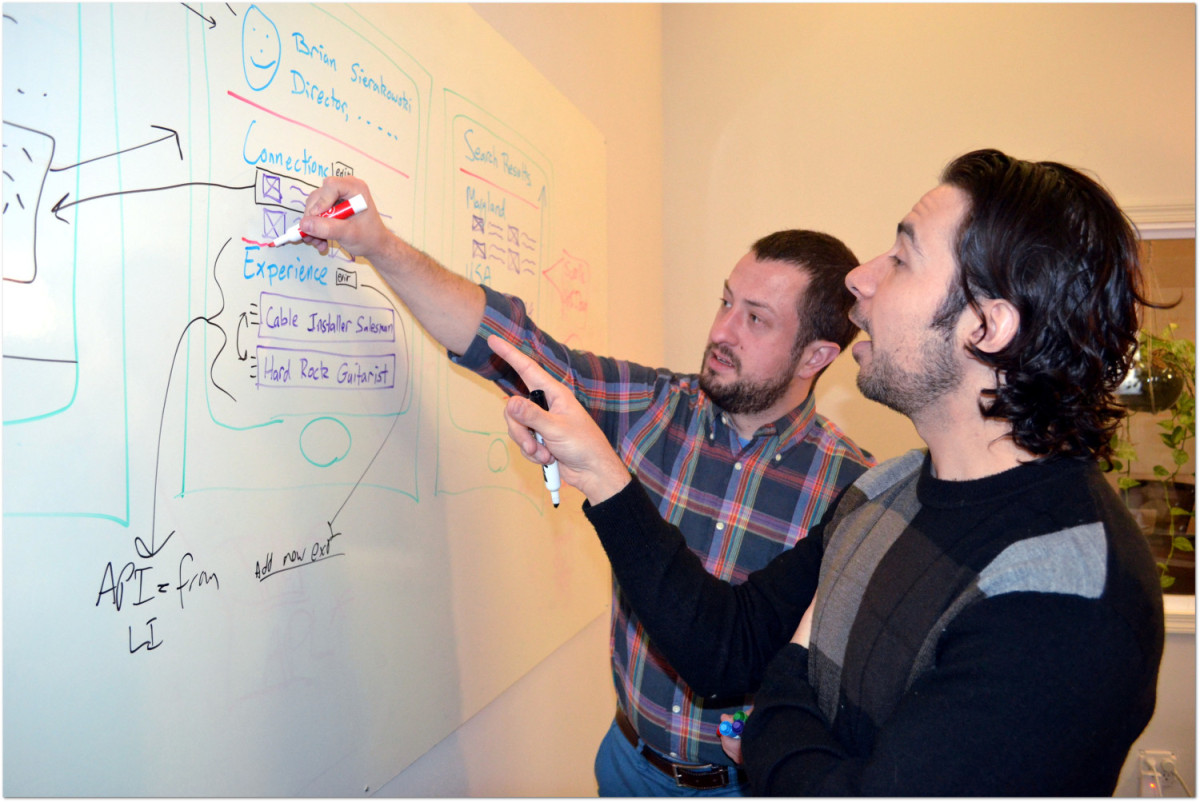If you are growing a tech startup or a software consultancy, recruiting and hiring the right tech team is mission critical. When you have the right developers on your tech team, you can build the stable, secure and streamlined technology you need, quickly enough to keep up with the market. In this post, I’ll walk through three key tenets SmartLogic uses for our hiring process.
Keep in mind that we’re always improving our processes when we learn new methods or when the industry changes. This is how we hire now, but this advice might change in a few months or years.
1. Recruiting and hiring are easier when you’re involved with the technical community
SmartLogic is almost never hiring, but we are also never not hiring. We are constantly out in the community, meeting both clients and potential hires.
We know so many people, and get so many inquiries about working at SmartLogic, that we very rarely have to actually advertise a job post. We are always meeting people, whether it’s at a meetup or through the content we put out, so when we do need to make a hire, we already have strong relationships with possible applicants. This keeps us from being in a rush and having to start from square one with a stack of resumes.
We interact with the community by sponsoring or speaking at one of the many meetups in the Baltimore tech community. We also maintain an active blog and post content that would appeal to developers.
2. Interview developers like they already work for you
You want to see how developers will do in the environment they will be in day in and day out (as much as that’s possible in the high-stress, time-limited environment of an interview). Our developers pair program when working on projects, so we have interviewees pair program, too. During an interview, someone from our team pairs with the applicant and they build something together. This shows us the applicant’s technical skills, and how they will perform in our work environment.
Reviewing work samples or having candidates work out a pseudo-algorithm on a whiteboard, doesn’t tell us much about how someone will do in an everyday job at SmartLogic. Whatever your team does on a day-to-day basis, try to mimic that in an interview.
3. Help your employees reach their goals, even if it means they leave your company
Transparency is a core principle at SmartLogic. We are quick to set expectations and will help developers when they need it. Setting the standard of transparency helps make sure that folks will tell you when they’re struggling, rather than hiding issues because they feel insecure in their jobs.
We’re also looking to help our employees grow — we support them if they’d like to go to conferences, or learn new skills. Developers are looking for interesting problems to solve and want to work with new tech. They want a sense of accomplishment. If it always feels like a grind, they won’t be happy.
Of course, sometimes when employees grow, they’ll want to move on from your company.
As a consultancy, we understand we are often one step in a developer’s career. We only want happy employees at our company; happy employees know that they’re working towards career goals in their current job. At SmartLogic, we want to know about these goals. Want to work at a consultancy and then start your own company one day? Want to work with us and then move to a job in-house at a huge tech company? We encourage new hires and employees to tell us these things; that way, we can help employees reach their goals, and bridges won’t get burned when employees make that next career leap.
Sometimes, our former employees even send us referrals for clients and other hires once they’ve found their next jobs. We’ve also had several former employees become clients, once they’re in-house somewhere. The old adage applies: The only thing worse than training a team member and having them leave is not training them and having them stay.
In conclusion
Being active in the community, having a practical interview, and being transparent with our developers helps SmartLogic recruit, hire and retain excellent technical talent. We’ve seen the complaints about technical talent in the area being thin, but if your company is involved in the community, hires the right people and treats them well, you shouldn’t have a problem.
Want to learn more about how to hire the right developers? Have lunch with us!







